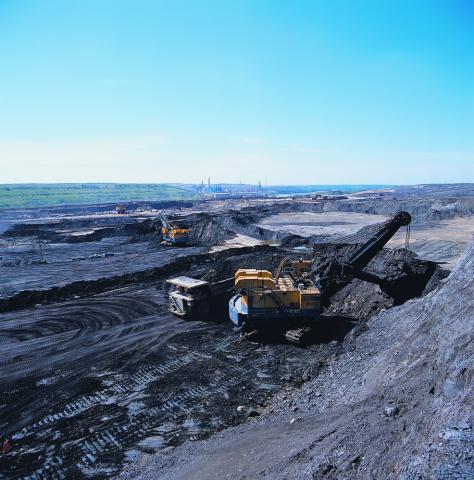Just in time for world water day, researchers at Penn State university have discovered a new “waterless” method for extracting oil from the thick mix of clay, water and bitumen that makes up the tar sands.
The current method for getting the oil out of the sand involves using huge amounts of both fresh water and energy. Hot water is mixed into the sand, which is then piped to an extraction plant and shaken up to release the bitumen. Some of the water from the process is recycled, but huge amounts are simply dumped into toxic lakes.
The new process, according to the Penn State scientists, uses ionic liquids – salt in a liquid state – to separate out the oil from the sand, and, since it doesn’t use water, doesn’t create the tailings ponds. It has been widely reported as cleaner and eco-friendly.
There is not, and never will be anything intrinsically eco-friendly about the tar sands.
Let me be clear: I’m not saying it’s impossible to improve some of the extraction and refining processes to make them less destructive. Quite to the contrary, I’m certain it can be done, and have no reason to doubt that this new process does what the researchers say it can do. (Whether it could be scaled up to be economically viable, and whether the companies involved would be willing to invest in implementing it is – of couse – entirely another question.)
But let’s pretend, for a minute, that human ingenuity can perfect a completely safe, non-toxic, waste free method of extracting oil from the tar sands. We’ve solved all the technical challenges. We’ve cleaned up the existing environmental disaster. We’ve compensated the impacted communities currently living downstream for all the cancers and loss of livelihoods, and we’ve figured out (somehow) how to restore one hundred percent of the ancient boreal forests, wetlands, lakes, and biodiversity that were there before the open-pit mining started.
We’d still be missing the point.
To maintain a liveable climate, we need – as a minimum – to limit temperature rise to less than 2 degrees Celsius. Burning all the fossil fuels on the planet will result in at least 8-10 degrees of warming, if we’re lucky, and cause mass extinctions. So, as George Monbiot wrote in the Guardian, when it comes to fossil fuels, we simply have to decide how much we should leave in the ground.
The answer is that we can only afford to burn around 60% of all current, conventional sources of fossil fuels. That leads to two unavoidable conclusions: first, we need to immediately stop expanding existing fossil fuel sources and start prospecting for new clean energy sources; second, the very first sources to be decomissioned should be those unconventional sources with the highest climate and environmental impacts – the tar sands are perched at the top of that list.
Many countries are beginning to come to terms with this realisation, looking long and hard at what it means to be importing the dirtiest, most unethical oil on the planet from Canada, and are considering low-carbon fuel standards to address that. Unfortunately the Canadian government is still doing everything in its power to prevent them from doing the right thing.
Subscribe to our newsletter
Stay up to date with DeSmog news and alerts







